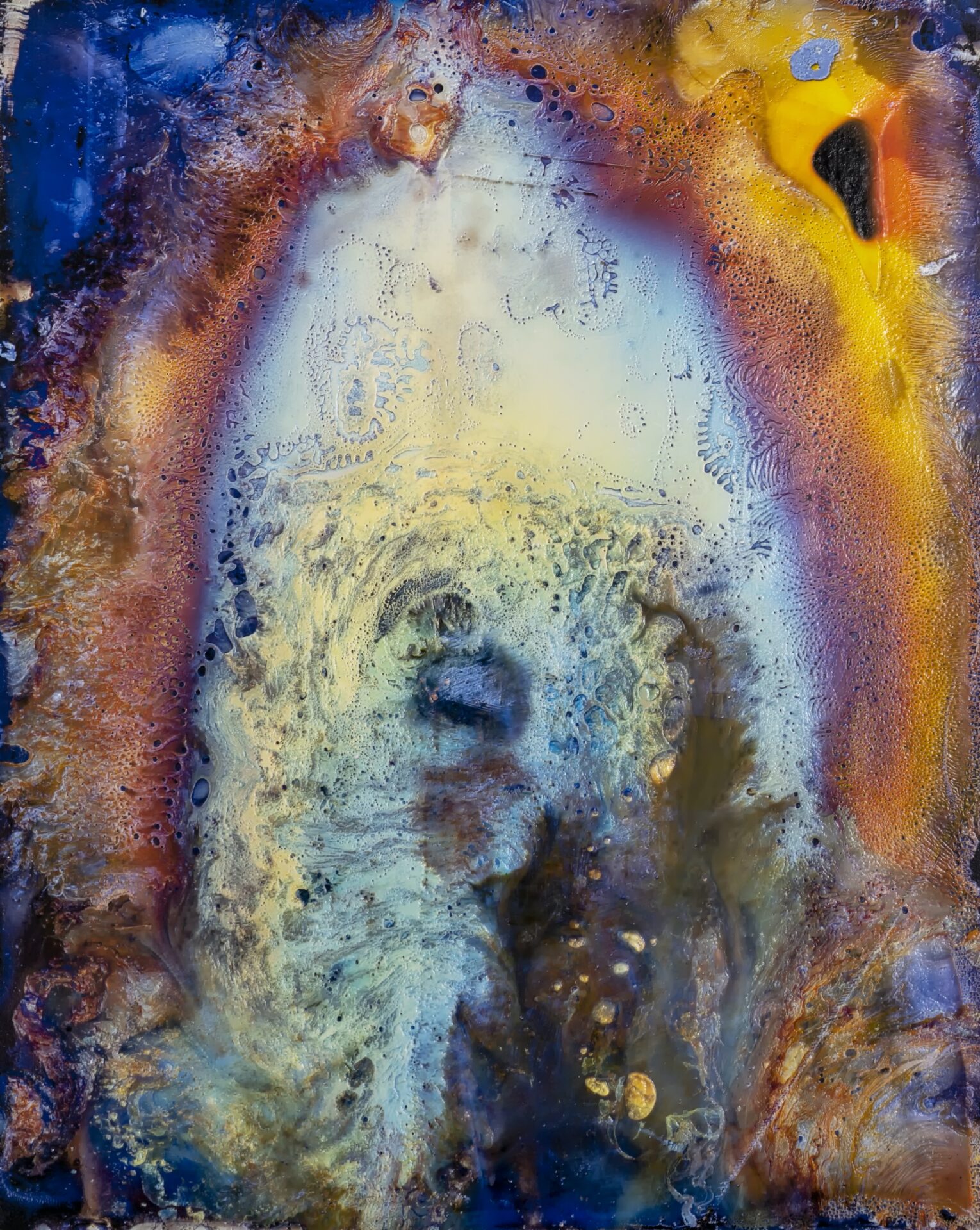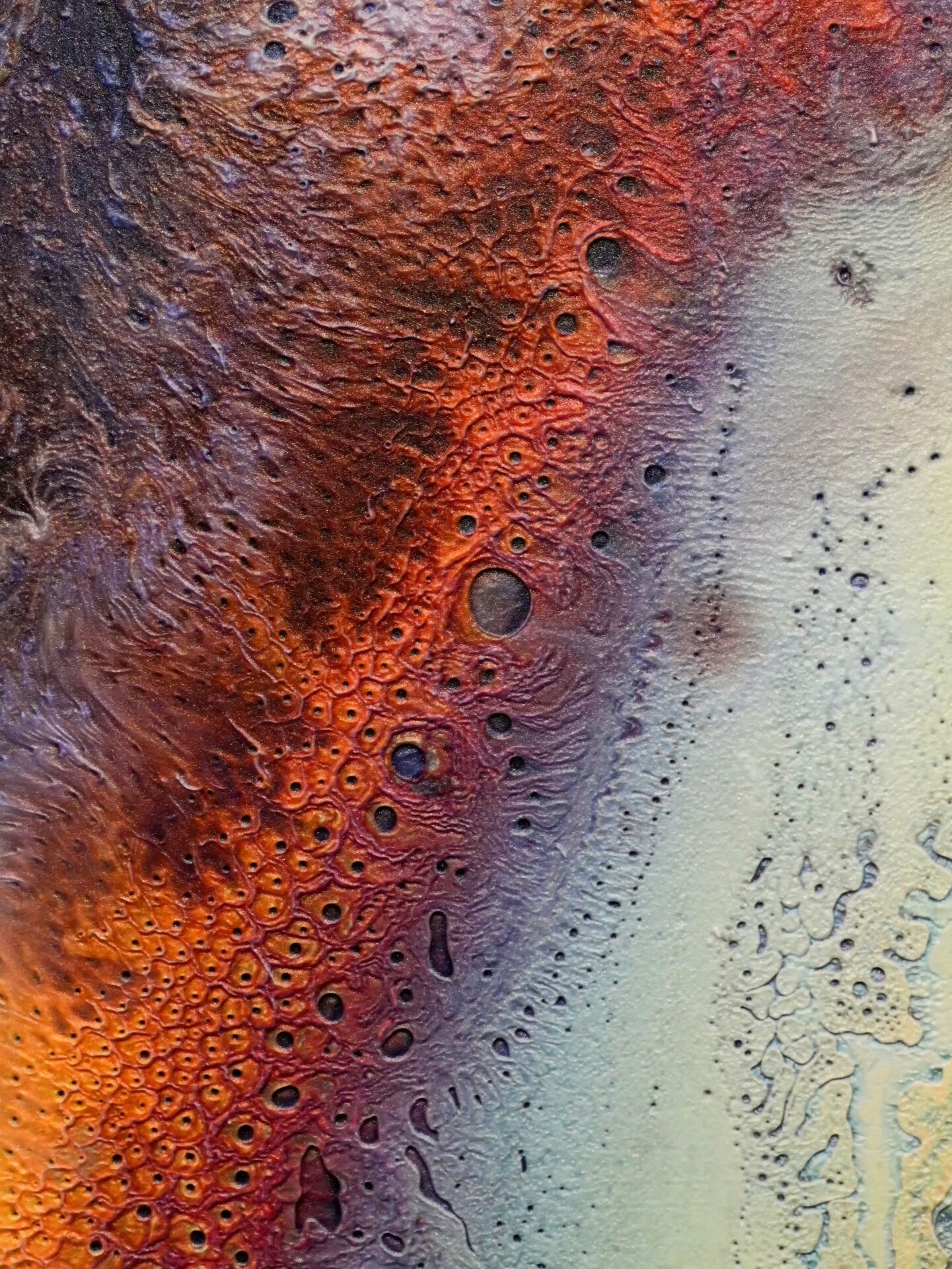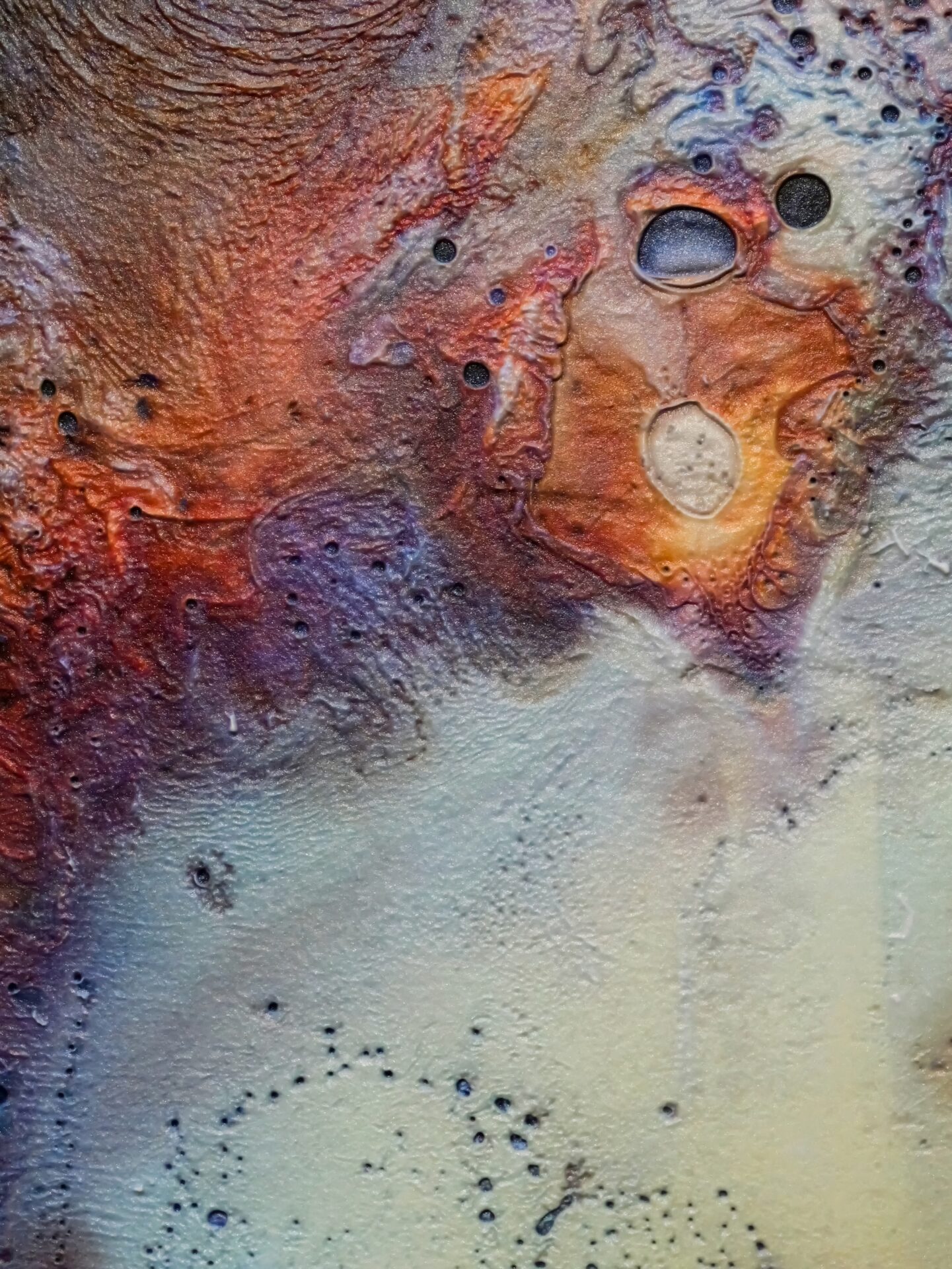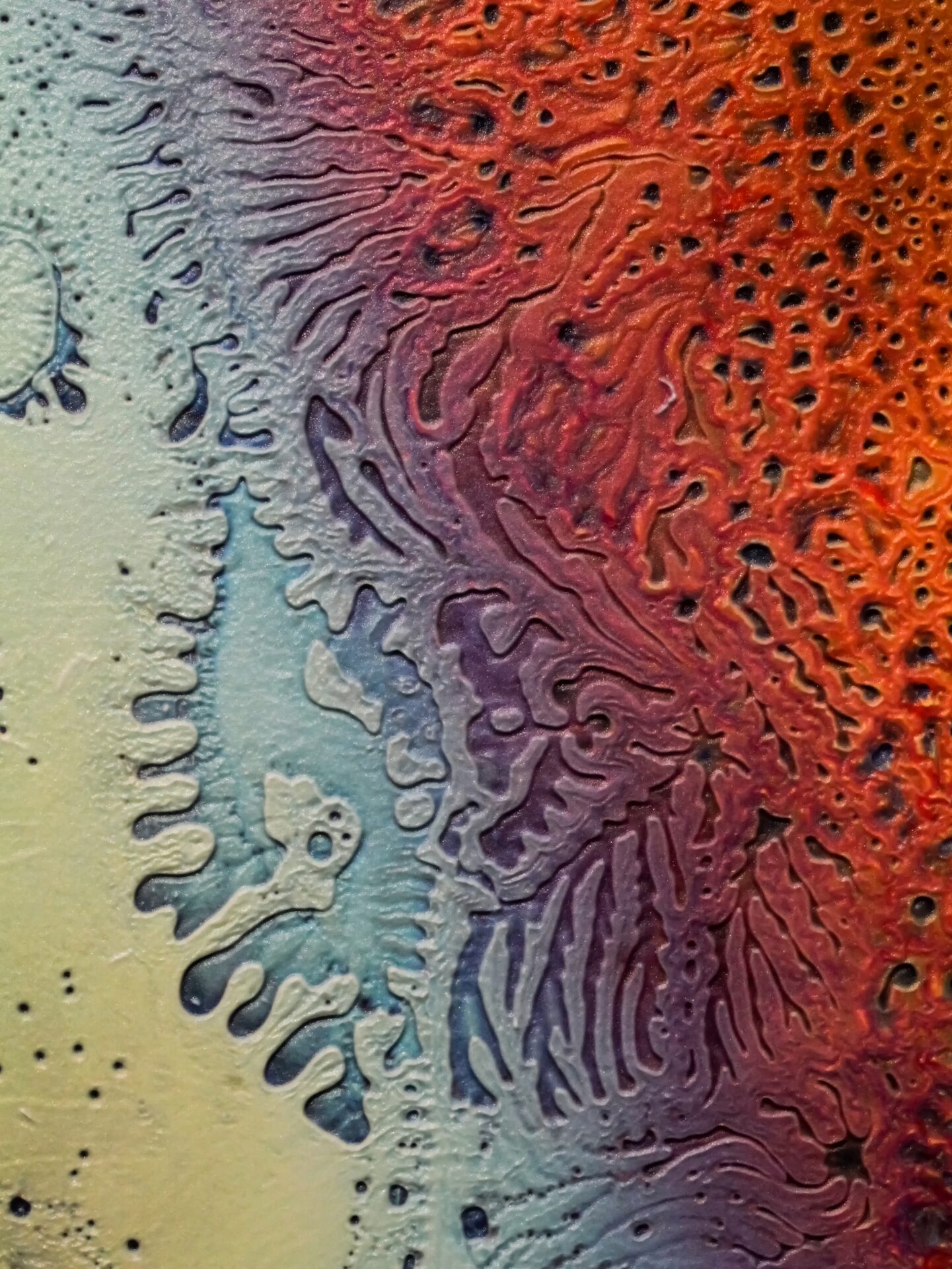Daisuke Yokota, Untitled
In an inversion of roles, film itself becomes the focus. The oozing, undulating emulsion of Color Photographs subverts the medium through kaleidoscopic prints that evoke cascading waves of unfamiliar sensations in the viewer. Far from accidental, the images are the product of meticulous calibration. The artist collaborated closely with StareReap technicians, analyzing each layer of sedimentary deposits left by splayed film and the interplay of every color, to imbue the print with the topology of the primal material. StareReap represents a powerful tool for creation and experimentation that goes beyond mere replication. Yokota described the project’s transformative process: “I assumed that we would simply set out to recreate the quasi-3D state and general motif of the original. But it turns out that we started from the utterly flat, 2D image data, and gradually developed the form from there. Being able to add layer upon layer to control the height struck me as an intriguing simulation. [The process] is not about perfect recreation. There is no one answer, so the options are endless.”

Daisuke Yokota, Untitled
In an inversion of roles, film itself becomes the focus. The oozing, undulating emulsion of Color Photographs subverts the medium through kaleidoscopic prints that evoke cascading waves of unfamiliar sensations in the viewer. Far from accidental, the images are the product of meticulous calibration. The artist collaborated closely with StareReap technicians, analyzing each layer of sedimentary deposits left by splayed film and the interplay of every color, to imbue the print with the topology of the primal material. StareReap represents a powerful tool for creation and experimentation that goes beyond mere replication. Yokota described the project’s transformative process: “I assumed that we would simply set out to recreate the quasi-3D state and general motif of the original. But it turns out that we started from the utterly flat, 2D image data, and gradually developed the form from there. Being able to add layer upon layer to control the height struck me as an intriguing simulation. [The process] is not about perfect recreation. There is no one answer, so the options are endless.”
WORKS
ARTIST PROFILE
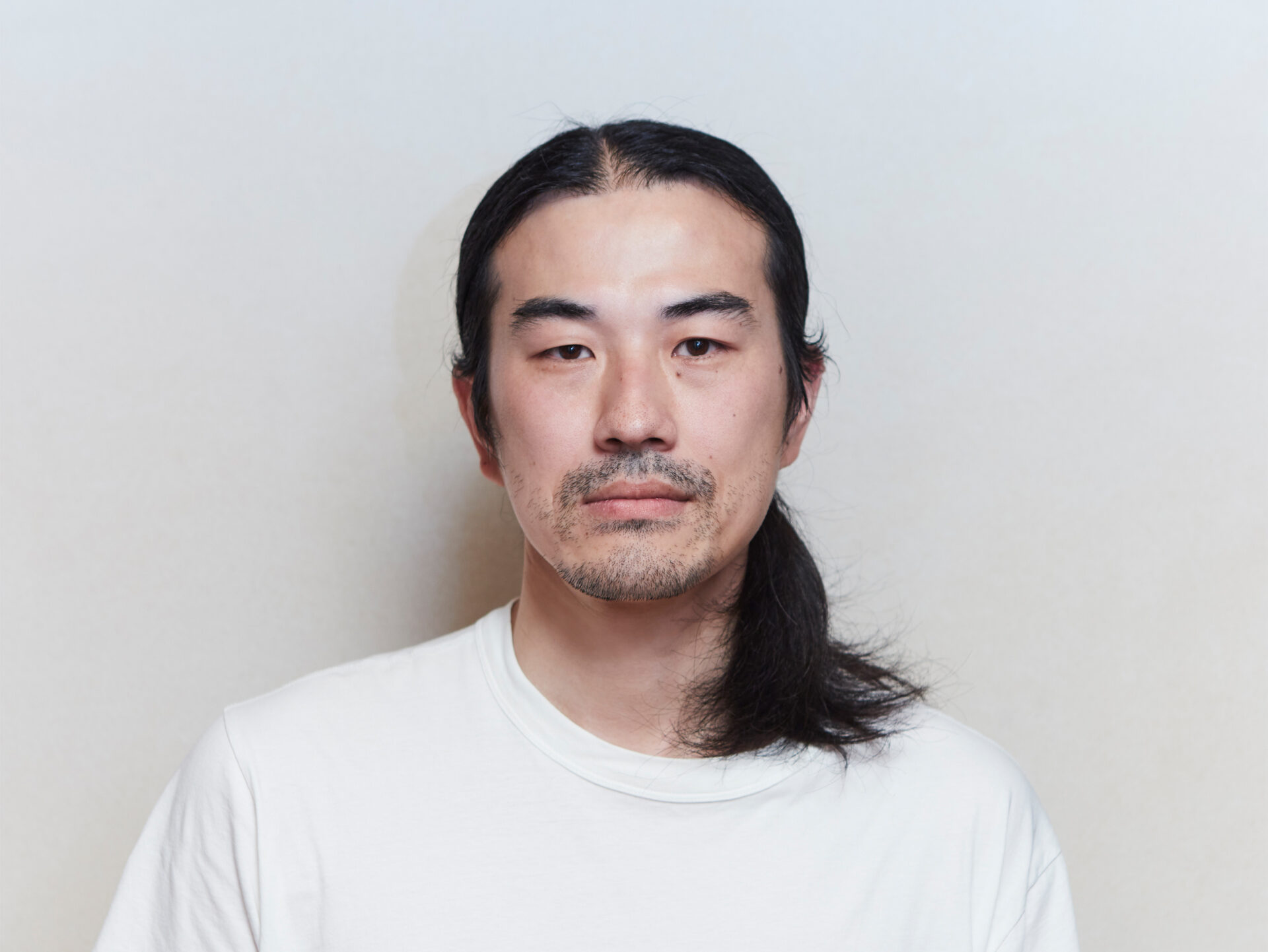
Daisuke Yokota
Yokota found his métier with early work that explored the abstract fog between illusory binaries: memory and time, image and reality. In recent years, he has embarked on a series of projects that question the very materiality of film in a deconstruction of the medium itself, challenging accepted preconceptions and asking not only what photography is, but also what it could be.
The extents of his interventions are perhaps best exemplified by the Color Photographs series, in which Yokota exposes undeveloped film to light and chemical cocktails, turning the film into polychromatic layers of skin that he then digitally scans to produce his completed prints.
photo:Kohey Kanno

